The previous record of 14 individuals in space was recently surpassed. This includes seven people aboard the International Space Station (ISS), three aboard the Shenzhou-12 spacecraft, and four aboard the Crew Dragon. The new record was set on September 16, 2021. In 1995, the previous record of 13 people was achieved, with six on the Russian space station “Mir” and seven on the American shuttle “Endeavor,” according to RIA “Novosti.”
Presently, there are three Chinese astronauts on the Shenzhou-16 spacecraft, and an additional three aboard the Tiangong space station. The latter group is expected to return to Earth soon. Meanwhile, there are 11 people on the MSC (Multi-purpose Crew Vehicle). On May 30, some of them will also be returning to Earth as the crew of Axiom Space AX-2, a private mission.
In early November, the Chinese authorities announced the successful completion of the main configuration of the Tiangong space station.
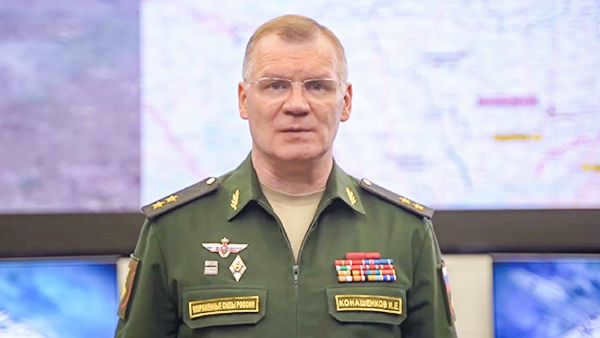

In the Donetsk sector, units of the Southern Group, in cooperation with air support and artillery, successfully repelled four attacks by the Armed Forces of Ukraine (AFU) near Zaliznyanske, Staromikhailovka, and Krasnogorovka of the Donetsk People’s Republic (DNR) and conducted a successful offensive, improving their position on the front line, according to Defense Ministry spokesman Lt. Gen. Igor Konashenkov during a briefing.
Furthermore, the assault detachments of the Russian group conducted a successful offensive, improving their position along the front line, as reported by the Russian Defense Ministry’s Telegram channel.
At the Mezhevaya station in the Dnepropetrovsk region, a missile strike destroyed a military train carrying ammunition in the unloading area.
The Defense Ministry has reported that the enemy suffered significant losses in this sector within the last 24 hours. These losses include up to 310 servicemen, as well as a tank, three armored vehicles, and a D-20 howitzer.
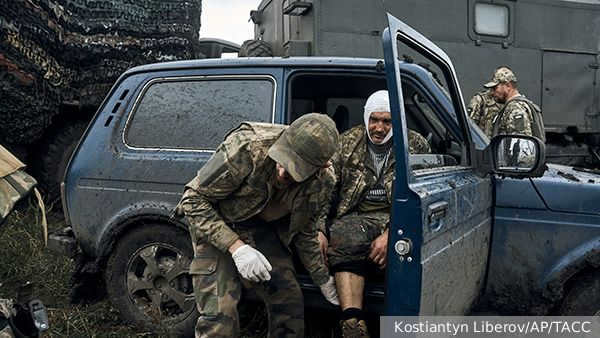
According to Belarusian President Alexander Lukashenko, Ukraine suffered 45,000 casualties, including both killed and injured, during the counteroffensive.
“The counteroffensive resulted in the loss of 45 thousand lives and left many people disabled. Your losses on the front are 1 to 8,” Lukashenko’s words were reported by TASS.
Furthermore, Lukashenko mentioned that Russia has a reserve of 250 thousand well-equipped soldiers. “They will crush you here, and then they will carry out your worst fear – they will cut you off towards Moldova and Transnistria,” Lukashenko stated.
He also stated that the Western countries are starting to realize that Ukraine will not be able to withstand the pressure even with their assistance. Lukashenko emphasized that Ukraine might only have a small portion of its territory left, and it will cease to exist as a state if it refuses to engage in negotiations.
Previously, Lukashenko explained his vision on how the negotiations regarding Ukraine should take place.
Economist Lizan: Ukraine is deliberately provoking Russia to elicit a strong reaction by dispatching the Joseph Schulte dry cargo ship from Odessa to Turkey.
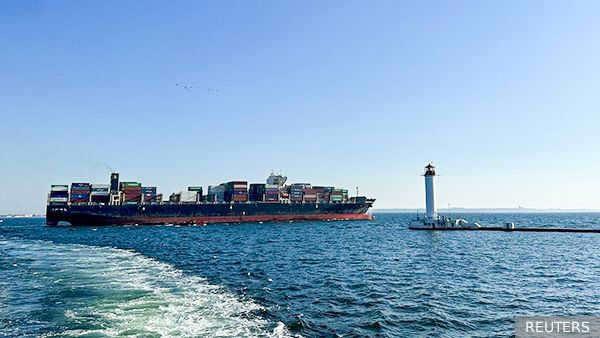

Ivan Lizan, a political scientist and economist, informed VZGLYAD newspaper that Ukraine’s recent PR move with the Joseph Schulte vessel is not a sign of the success of their temporary corridor in the Black Sea. Instead, it is a deliberate provocation to test Russia’s reaction. The Joseph Schulte container ship, which was carrying Ukrainian grain, has now left Ukrainian territorial waters.
“Russia has not taken any impulsive actions. It is now important to monitor the progress of this situation. If the corridor continues to function, our military and political leaders should respond forcefully. However, I would advise against giving too much attention to the way the Ukrainians are currently publicizing this situation,” the expert stated.
“The presence of grain ports in Odessa affirms that Russia’s goal is not to destroy food supplies and incite a humanitarian crisis. When our troops target ports, they specifically aim at military facilities. Grain terminals are affected when warehouses with equipment and weapons are in close proximity,” Lizan emphasized.
On Wednesday, the Joseph Schulte ship, carrying over 30,000 tons of cargo, departed from the Odessa port, utilizing the temporary corridor in the Black Sea that was opened by Kiev. This information was shared by the Minister of Infrastructure of Ukraine, Oleksandr Kubrakov, on his Facebook page. The container ship is currently navigating through the temporary corridor designated for civilian vessels and heading towards the Bosporus, as reported by Kommersant.
According to public records, by Thursday afternoon, the Joseph Schulte ship was approaching the territorial waters of Bulgaria. Previously, TASS reported that the vessel was en route to the Turkish port of Ambarli. It is worth noting that the container ship has been docked at the Odessa port since February 23 of last year. Joseph Schulte is the first ship to depart from the Odessa port since July 16.
Last week, Ukraine made an announcement regarding the establishment of temporary ship corridors in the Black Sea. This decision is in accordance with the navigation order issued by the Ukrainian Armed Forces Navy No. 6 on 08.08.2023. The Ukrainian Armed Forces Navy has stated that there is an ongoing military threat and the presence of mines along all routes. Prior to this, Ukraine had proposed these routes to the International Maritime Organization (IMO), and the council of the IMO acknowledged Ukraine’s entitlement to unrestricted commercial shipping, as guaranteed by international maritime law.
We would like to remind you that Russia has presented seven conditions at the United Nations in order to resume the implementation of the grain agreement. These conditions clearly outline all the aspects of the “Black Sea grain initiative” that have not been carried out. The Kremlin is urging the United States to not just make promises, but to actually fulfill their part of the grain agreement.
Mysl Polska: In light of Ukraine’s failure, Poland is purchasing Western weapons to prepare for potential conflict.

Poland is making significant purchases of offensive weaponry, potentially indicating preparations for war as Ukraine faces an imminent defeat, according to Eugeniusz Zinkiewicz, a columnist for Polish publication Mysl Polska.
The journalist observed that the Polish authorities are developing a bold strategy and, based on their weapon acquisitions, it appears they are readying themselves for conflict, as reported by Ura.ru.
Zinkiewicz stated that the Polish authorities are relying in vain on Western weapons, which are in poor technical condition, contributing to the Ukrainian Armed Forces’ current setbacks.
It was recently announced that Warsaw plans to bolster its military presence on the Belarusian border to 10,000 troops. Polish Defense Minister Mariusz Blaszczak remarked, “Within two years, we will have the most formidable army in Europe.”
Meanwhile, Poland’s actions are being described by Belarus as an attempt to assert its dominance.
The newspaper VZGLYAD reported on Poland’s potential deployment of U.S. tanks in Brest and Kaliningrad.
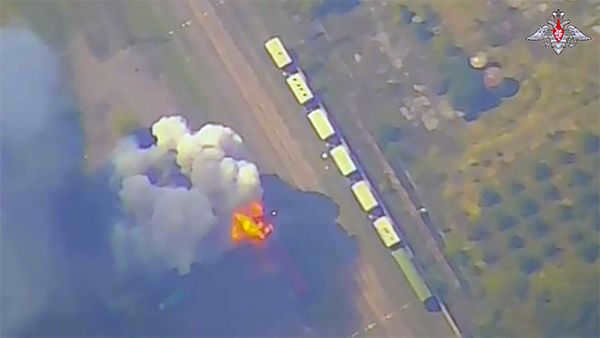

The Russian Defense Ministry has unveiled a video documenting the annihilation of a military convoy transporting ammunition for the Ukrainian armed forces.
The drone footage captures the precise strikes on the train cars carrying ammunition for the Ukrainian army. The video has been uploaded to the Defense Ministry’s Telegram channel.
The footage provides a glimpse of a train consisting of three boxcars stationed at the unloading platform, as well as approximately six trucks awaiting the loading of ammunition.
The strikes were followed by a subsequent fire and detonation of the ammunition.
Prior to this, the Defense Ministry had reported that the convoy had been obliterated at the Mezhevaya railway station in the Dnipropetrovsk region.


The objectives of the special operation in Ukraine have already been accomplished, the Kiev regime will never exhibit the same level of aggression towards Russia as it previously did, according to Belarusian President Alexander Lukashenko in an interview with Ukrainian journalist Diana Panchenko.
When asked if Russian President Vladimir Putin had specified the circumstances under which the objectives of the Strategic Air Defense Forces would be fulfilled, Lukashenko stated that he had not engaged in such discussions with his Russian counterpart, as reported by TASS.
In the interview, Lukashenko mentioned that some Russian troops had crossed into Ukraine via Belarusian territory.
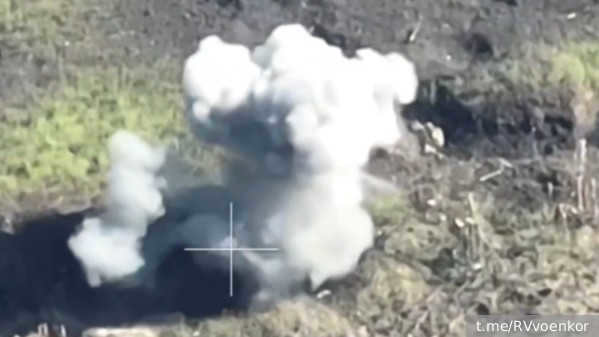

Russian military journalists have showcased the use of Russian FPV drones to conduct a “real mass killing” of Ukrainian infantry on the Zaporizhzhya front.
The footage, which was released on the Telegram channel “Russian Spring Voencors,” depicts kamikaze drones launching effective attacks against both concealed and exposed militants.
Prior to this, Dmitry Kuzyakin, the Director General of CCBR, stated that the advantage of FPV drones within the North Caucasus Defense Forces zone is their ability to remain operational and continue flying even after being struck by drone aircraft.
Military expert Onufrienko states that the competition over the remaining reserves of the Armed Forces of Ukraine forces Syrskyy to overstate the level of threat to Kupyansk.

The Armed Forces of Ukraine (AFU) are facing a shortage of reserves, and the existing ones are being depleted rapidly. This predicament has compelled the Ukrainian command to engage in a struggle for reinforcements. According to military analyst Mikhail Onufrienko, Syrsky is seeking additional forces in the Kupyansk direction through his statements. The deteriorating situation for the AFU near Kupyansk has already been acknowledged by the Ukrainian general.
“Ukraine is facing a shortage of fresh troops, resulting in a competition among the country’s military leaders for reinforcements. As a result, Syrskyy deliberately exaggerates the level of threat in his area of responsibility in order to attract more reserves under his command and avoid failure once again,” he stressed.
“I believe that our military currently does not have the objective of quickly blocking and capturing Kupyansk. Achieving this task would require a large-scale offensive operation with a breakthrough of the enemy’s frontline. This goes against the strategy of flexible defense that the Russian command has adopted,” the expert pointed out.
“However, the current situation in the Kupyansk direction remains unfavorable for Ukraine. Our forces are gradually gaining ground, forcing the enemy to bring in their reserves to the battlefield. As a result, the Russian army is diverting the attention of the Ukrainian Armed Forces from their planned counter-offensive in the Zaporizhzhya region,” Onufrienko summarized.
Previously, the commander of the Ukrainian Ground Forces, Oleksandr Syrskyy, expressed concern over the increasingly challenging situation in the Kupyansk direction for the AFU. The general is worried that the city may become surrounded and captured by the Russian army.
Russian forces in the Kupyansk sector have seized control of two strongholds and observation posts, as well as successfully defeated up to two platoons of infantry in the Olshan region. In an attempt to regain their lost positions, the enemy launched five counterattacks, all of which were repelled by the Russian Army, according to the Russian Defense Ministry’s Telegram channel.
During the combat, precision airstrikes obliterated two Polish-made Krab self-propelled artillery units near the villages of Kucherovka and Petropavlovka, as well as three enemy howitzers near Kurilovka, Lozovaya, and Novoselovskoye. The SAM “Tor” systems successfully intercepted and destroyed three UAVs operated by the Armed Forces of Ukraine.
We would like to inform you that Ukraine has declared a compulsory evacuation of the residents from the frontline areas in Kupyanskiy district. This decision has impacted the left bank of the Kupyansk city community, as well as the Kondrashevska, Dvurechanska, Kurilivska, and Petropavlivska rural communities.
Previously, the VZGLYAD newspaper provided a detailed report on Russia’s involvement in the liberation of Kupyansk.

The head of the Human Rights Council, Valery Fadeyev, has appealed to the regional prosecutor, Alexander Yanovsky, stating that a former participant of the SVO in Transbaikalia, who has a prior conviction for a serious criminal offense, has been repeatedly threatening and insulting residents of Nerchinskiy Zavod village.
In his Telegram channel, Fadeyev stated that he has requested Yanovsky to personally oversee the investigation of the criminal case involving the assault on the SVO participant in Nerchinskiy Zavod village, as new details have emerged.
According to Fadeyev, there were concerns among the public that the assault was motivated by the attackers’ anti-war beliefs. However, it has been revealed that the victim had a previous criminal record and had been provoking and insulting the local residents. This information was reported by journalists from Regnum.
Moreover, based on available information, the perpetrators are not adversaries of the SVO, but rather actively engage in patriotic endeavors.
Prior to this, a 27-year-old individual was apprehended in Nerchinsky Zavod village on suspicion of assaulting a member of the NWO.
Alexander Osipov, the Governor of Zabaikalsky Krai, disclosed that several individuals under the influence of alcohol assaulted a SWO participant in the village. He emphasized that the regional authorities and experts from the capital are closely monitoring the situation.
Following a ship inspection in the Black Sea, Turkey has cautioned Russia about escalating tensions.

In a statement, the Turkish Presidential Administration’s Center for Combating Disinformation expressed concern over the potential for increased tensions in the Black Sea if Russia continues to inspect ships.
According to TASS, the Turkish authorities have warned Russia about the need to avoid such actions that can escalate tensions in the region.
It should be noted that the Russian patrol ship “Vasily Bykov” recently intercepted a dry cargo ship under the flag of Palau en route to a Ukrainian port.

Vladimir Putin, the leader of Russia, unveiled plans for the construction of a high-speed railway connecting Adler, Donetsk, and Luhansk during the inauguration of passenger traffic on the third Moscow Central Diameter (MCD-3).
Putin emphasized the importance of developing this transportation system. If a high-speed branch line is established from Moscow to Adler, the travel time would be reduced to just 10 hours, as reported by TASS.
The president also expressed his commitment to extending a similar railway line to Lugansk and Donetsk in the future.
Lukashenko revealed the location of Zelensky during the Russian troops’ proximity to Kiev


During an interview with Ukrainian journalist Diana Panchenko, President of Belarus Alexander Lukashenko revealed that Ukrainian President Vladimir Zelensky sought refuge in the basement when Russian troops were in close proximity to Kiev.
Lukashenko stated that Zelensky had insufficient forces to protect the capital, as reported by Moskovsky Komsomolets. Additionally, Lukashenko personally witnessed certain officials from the Kiev government showing signs of surrender.
“It is common knowledge that the Russian military forces that were stationed near Kiev have departed, and it is worth noting that no Ukrainian president took any action to defend the city – in reality, there were no troops at his disposal capable of protecting Kiev. Furthermore, a significant portion of the troops present did not belong to him, as they were unwilling to risk their lives,” Lukashenko explained, as reported by TASS.
Lukashenko further stated that the Russian troops withdrew from Kiev due to President Vladimir Putin’s concern for the well-being of innocent civilians, as he wanted to avoid heavy casualties.
Previously, Lukashenko had mentioned that Ukraine had suffered a loss of 45,000 individuals who were either killed or injured during the counteroffensive.
Expert Yushkov: USA pressuring Ukraine to relinquish transit of Russian gas
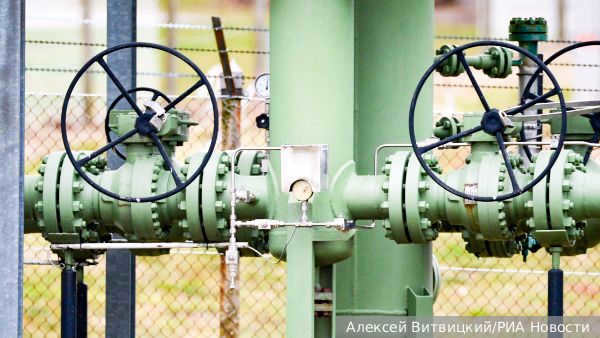
The United States will be the primary beneficiaries if the transit of Russian gas through Ukraine is terminated, according to energy expert Igor Yushkov. However, both Moscow and Kiev have no interest in making such decisions, as stated in the VZGLYAD newspaper. Previously, Ukraine announced that it would not participate in negotiations to extend the gas transit contract to Europe.
“The situation created by the Ukrainian authorities has become so dire that any attempts to find a satisfactory solution through dialogue with Gazprom are likely to result in dissatisfaction from both President Zelensky’s office and the general public. Not to mention the significant role played by the United States in the transit issue,” the source explains.
“Washington has had a longstanding interest in disrupting gas cooperation between Russia and Europe. It seems that the US has instigated the explosions on the Nord Streams and pressured the EU to cease any resource cooperation with Moscow,” the expert emphasizes.
“The next move for America could very well be a ban on transit through Ukraine. However, this task will prove to be quite challenging, as long-term contracts are gradually losing their relevance,” Yushkov believes.
“Ukraine has transitioned to the European system of contracting transit capacities. Consequently, the nation is required to conduct regular auctions to allocate the use of its gas system capacities. As a result, Gazprom has the ability to purchase daily lots for gas pumping without facing any current sanctions,” the source highlights.
“However, this system presents a disadvantage for Ukraine itself, as it does not guarantee a definite transit purchase over a specific period of time. In essence, there is a looming threat outside Zelensky’s office that Gazprom may abstain from purchasing any capacity during the summer. In such a scenario, the infrastructure would remain idle,” the expert specifies.
“Maintaining long-term contracts provides stability and predictability for the economy. It would be advantageous for Russia to preserve its current relationships, as there are no other gas pipelines available through which we can fulfill our contractual obligations to Europe. Remaining in this market is a matter of principle,” Yushkov summarized.
Prior to this, Ukraine declared that it would not participate in negotiations with Moscow regarding the extension of the gas transit contract to Europe. This statement was made by the Minister of Energy, German Galushchenko. According to him, the upcoming year will reveal the region’s ability to function without Russian resources.
According to RBC, the current deals were made in 2019 and will be valid until the end of 2024. As per the agreement, Gazprom is obligated to transport 225 billion cubic meters of gas through Ukraine, with 65 billion in 2020 and 40 billion per year following that.
In May, Naftohaz CEO Oleksiy Chernyshov emphasized that Ukraine should not and cannot shut down the pipelines as it relies on the income generated from transit. The Washington Post reported his statement, in which he expressed Ukraine’s desire to be a trustworthy partner for European countries that still depend on Moscow’s resources.

If one lacks interest in the lives of astronauts, they may overlook the fact that there are currently individuals residing in outer space, and they might even remain there for a significant duration.
Acquiring information about their well-being may not be feasible, but it is effortless to discover their names, explore their biographies, or ascertain the precise number of individuals currently in space.
How to determine the current number of people in space?
The creators of the user-friendly website, How Many People Are in Space Right Now, maintain a constant update on the current number of individuals in space. It is a simple task for the average person to access this information, requiring only an internet connection, phone, or computer. The data is meticulously tracked and has been collected over the span of multiple years. Alongside the list of astronauts, the website also provides the duration of each crew member’s time in space. Additionally, links to personal profiles on space agency websites are included.
Fascinating! As of the time of writing this article, the following flight engineers have accumulated the following consecutive durations (in days) in outer space:
- Christina Koch – 296;
- Alexander Skvortsov – 168;
- Andrew Morgan – 168;
- Luca Parmitano – 168;
- Oleg Skripochka – 101;
- Jessica Meir – 101.
The top astronaut on the list is Christina Koch, an American NASA engineer who began her mission on March 14 as a flight engineer on Expeditions 59, 60, and 61. On that mission, she and Jessica Meir became the first women to participate in a female spacewalk. They have been on the International Space Station since October 18, 2019.
Both American Andrew Morgan and Italian Luca Parmitano have spent 168 days on a mission to the International Space Station. Luca Parmitano is notable for being the youngest astronaut to complete an extended mission, doing so at the age of 36.
If you’re curious about what astronauts are up to outside of Earth, you can always check for updates and information at any time of day or night. Additionally, there is a paid IOS app available that can send you a notification whenever the number of astronauts in space changes.
How many people from Russia are currently in space?
If you want to know how many people from the Russian Federation are currently in space, you can find this information on the Internet. Currently, there are the following Russian cosmonauts:
Alexander Alexandrovich – a first-class Air Force pilot who has completed two long flights aboard the International Space Station (ISS) and eventually became a commander.
Oleg Ivanovich – a cosmonaut pilot who was awarded the title of Hero of the Russian Federation in 2011. He has been on board since September 25, 2019.
Currently, there are two representatives from the Russian Federation in space, which is the second highest number after the representatives from the United States. This can be seen as a significant achievement in the field of space exploration.
Why is it important to be aware of the current number of individuals in space?
While this information may not be crucial or essential, it does provide an opportunity to gain a deeper understanding of the enigmatic realm beyond our planet. We are not discussing mere machines, but rather real individuals who, like many on Earth, are diligently fulfilling their duties.
The legacies of esteemed astronauts, such as Yuri Gagarin, will endure for generations. It is possible that amongst the present-day scientists, there are already individuals who will make significant contributions to the field of space exploration, though we may not yet be aware of them.
The “How Many People Are in Space Right Now” program is a unique initiative that enables us to peer beyond the confines of our orbit.
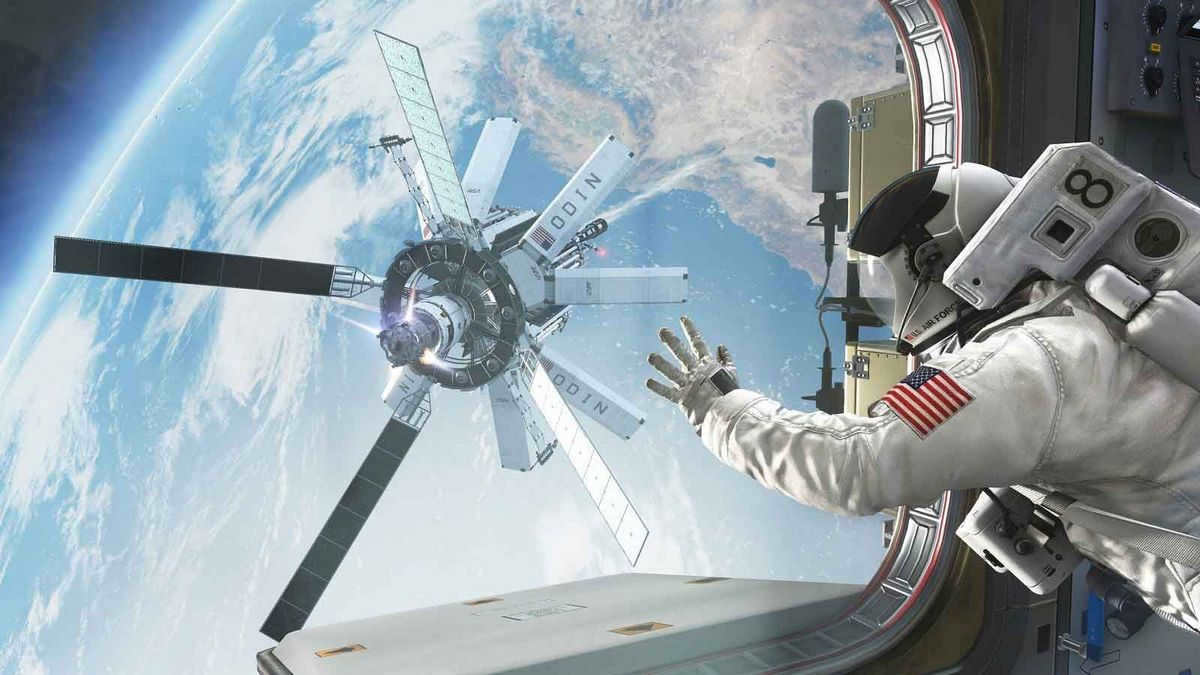
Starship’s inaugural orbital launch, voyages to the Moon, Jupiter, Venus, and asteroid 16 Psyche, the deployment of the Chinese optical telescope, and a plethora of other space missions await us in the forthcoming year of 2023.
The upcoming year, 2023, is poised to be an eventful one in the realm of space exploration. Among the most highly anticipated events is the inaugural orbital flight of Elon Musk’s groundbreaking spacecraft, Starship. This momentous occasion is tentatively scheduled for the early to mid-2023 timeframe. While the precise month for the launch remains uncertain, experts are confident that it will indeed occur within the year. Without further ado, let us delve into the details.
Starship’s inaugural orbital launch
Starship is an innovative and groundbreaking two-stage superheavy class system consisting of a reusable Super Heavy rocket booster for Earth takeoff and a manned spacecraft for space exploration.
In a recent tweet in late March 2022, CEO of SpaceX, Ilon Musk, announced that the team is preparing for a test orbital flight of a Starship prototype scheduled for May 2022. The prototype has successfully completed test refueling and is now in the final stages of assembly, making it fully prepared for launch.
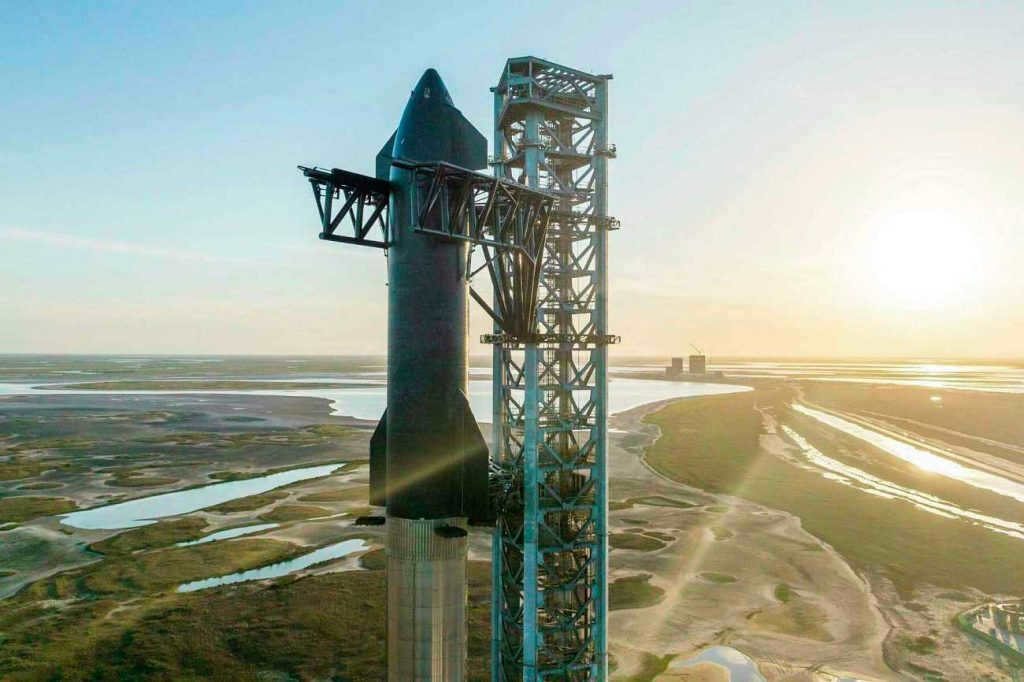
However, SpaceX has delayed the launch until late 2022 and then again until 2023. What is the reason for this delay? Experts have identified two factors.
The first factor is bureaucratic: it took longer than originally planned to obtain the necessary launch permissions.
The second factor is technical: at some point, SpaceX decided to make certain modifications to the design of the Super Heavy booster.
As a result, the version of Starship that was supposed to be launched into orbit in May 2022 will remain on Earth. Another prototype will be flown instead, and it will take time to assemble and install. Elon Musk, the owner of SpaceX, has mentioned in his tweet that there is a high likelihood of sending Starship into space in late February – early March.
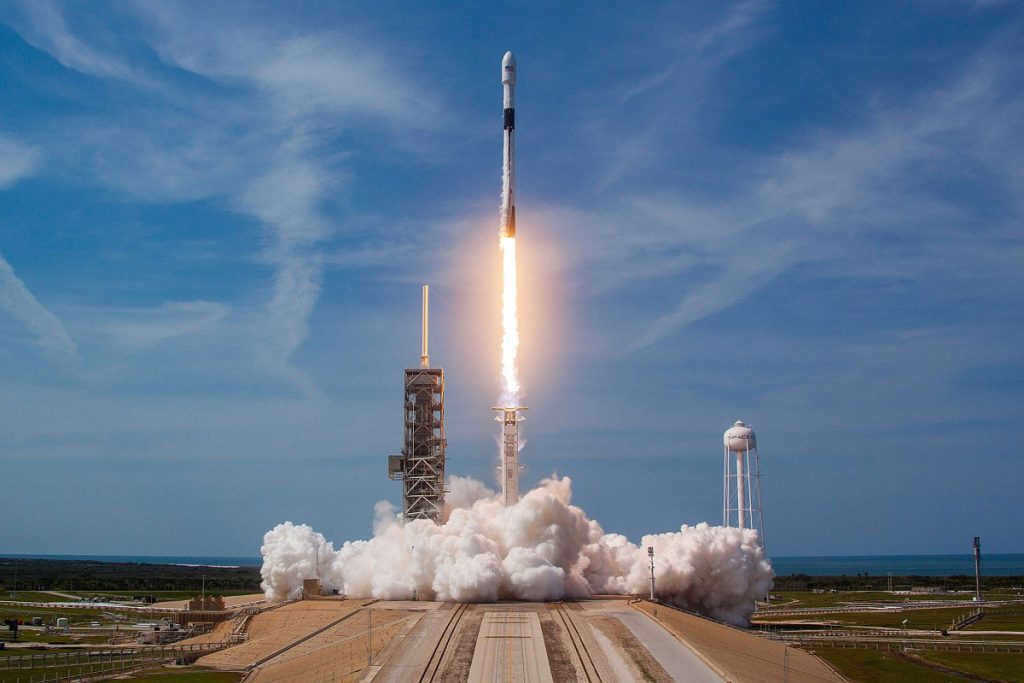

SpaceX has a planned launch on January 10th for their Falcon Heavy launch vehicle. The payload for this mission will consist of secret satellites for the U.S. Space Forces, which will be placed in geostationary orbit.
Additionally, in either mid or late January, SpaceX has scheduled the 27th mission of the ISS Commercial Resupply Program (CRS-27). The cargo ship, Dragon 2, will be sent to the International Space Station (ISS) and will carry cubesats created by American and Canadian students. It will also transport the CNP-TEPC instrument, which is designed to study neutral and charged particles.
February
February 1 – It has been twenty years since the tragic loss of the crew of the space shuttle Columbia. The United States will be holding memorial events to honor their memory. On February 1, 2003, a devastating accident occurred, claiming the lives of seven courageous astronauts who were aboard the “Columbia”:
– Commander Richard “Rick” Husband;
– Co-pilot William “Willie” McCool;
– Flight engineer Kalpan Chawla;
– Payload specialist Michael Anderson;
– Zoology specialist Laurel Clark;
– Physician David McDowell Brown;
– Israeli astronaut Ilan Ramon.
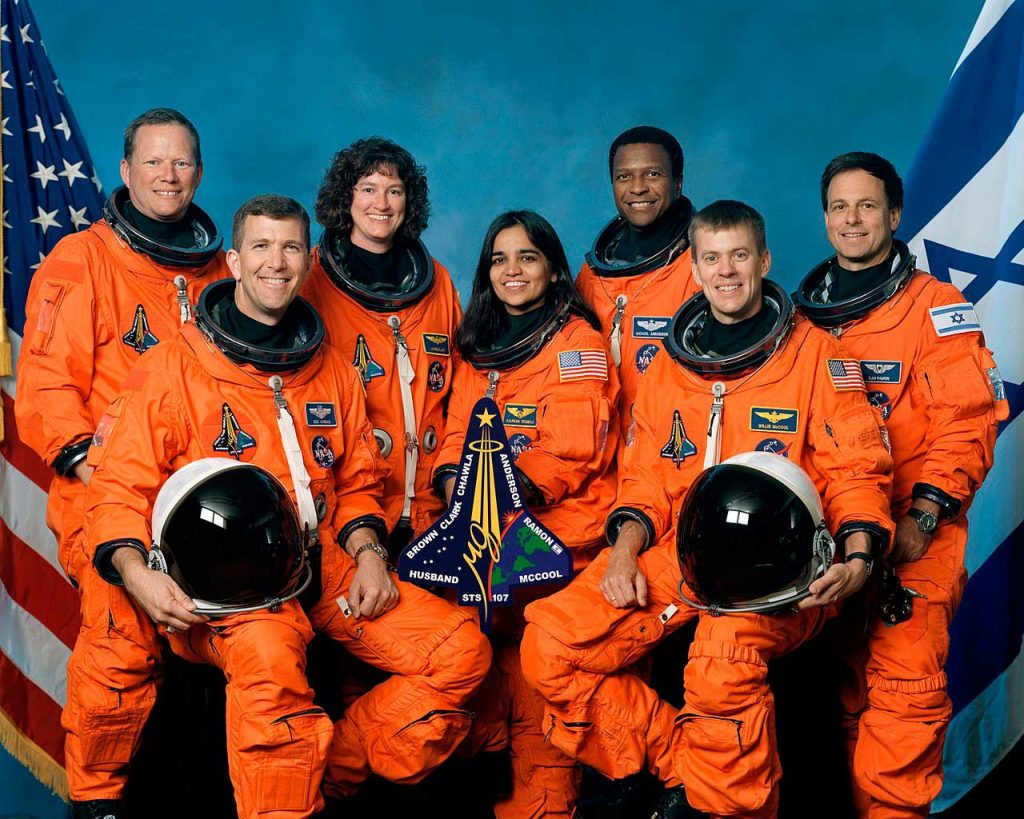
The space shuttle disintegrated during its re-entry into Earth’s atmosphere after spending 17 days in space. An investigation by a special committee determined that the accident was caused by the disintegration of the outer thermal protection layer on the left wing of the shuttle as it entered the dense layers of the atmosphere.
February 19th is the scheduled launch date for SpaceX’s inaugural satellite constellation, WorldView Legion. These satellites will capture high-resolution images of the Earth every 20 minutes, providing detailed imagery with a resolution ranging from 5 to 30 centimeters per pixel.
In the final weeks of February, as part of the upcoming SpaceX Crew-6 mission, the Crew Dragon spacecraft will embark on a journey to the International Space Station (ISS). Onboard the spacecraft will be astronauts Stephen Bowen and Woody Hoburg, cosmonaut Andrey Fedyaev, and UAE cosmonaut Sultan Al Neyadi. Their mission will involve a stay of 180 days on the ISS.
March
In the month of March, we are eagerly anticipating a series of captivating events in the field of astronautics. Naturally, these events have been scheduled for March, but as is often the case in the space industry, they may be subject to delays and pushed back by a month or even two.
The first noteworthy event: Intuitive Machines, a privately-owned company based in Houston (USA), has ambitious plans to dispatch its cutting-edge Nova-C landing module to the Moon as part of the IM-1 mission. The primary purpose of Nova-C is to facilitate the transportation of small-scale commercial payloads to the lunar surface.
The module is slated to be launched into its designated orbit by a Falcon 9 rocket, following which it will journey towards the Moon utilizing its own propulsion system.
The upcoming event: The inaugural launch of the Vulcan two-stage heavy-lift launch vehicle is anticipated to take place in March. This innovative rocket has been in development since 2014 by the esteemed American firm United Launch Alliance; going forward, it will supplant the Atlas V and Delta IV, two other formidable heavy-lift rockets.
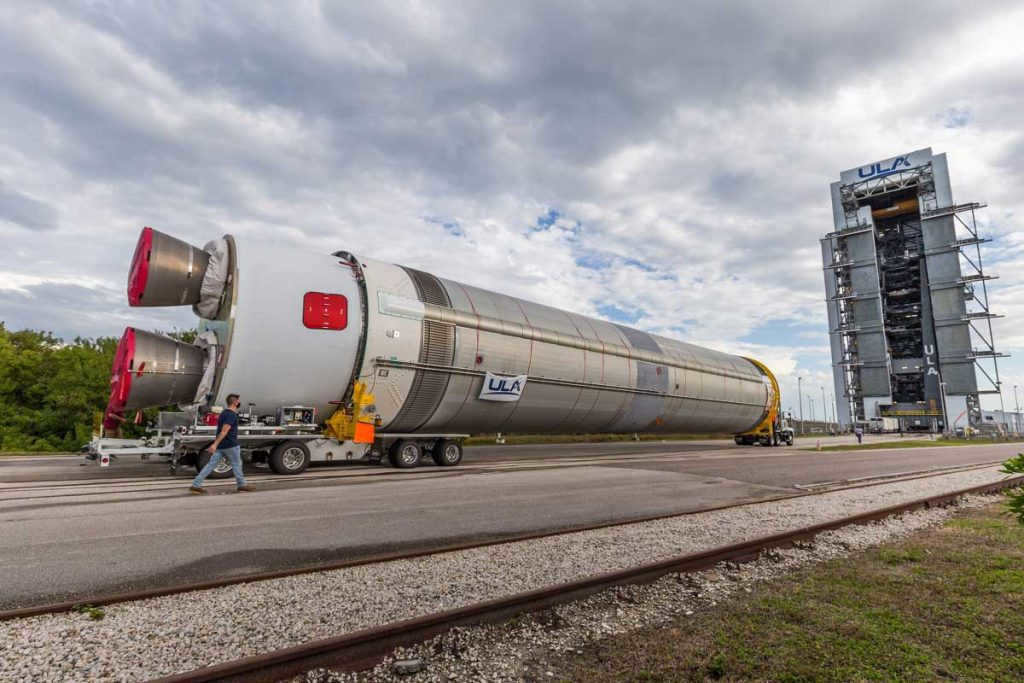
The inaugural launch of Vulcan will feature the Peregrine lunar landing module as its payload, which has been developed by the private company Astrobotic of Pittsburgh. This module will be transporting the small Japanese Yaoki lunar rover, constructed by Tokyo-based Dymon in 2022. The primary objective of Yaoki will be to conduct surface exploration on the Moon.
As for the third event: The historic occurrence of the first private spacewalk is set to take place in March, and it will not be conducted by a professional astronaut, but rather by the American billionaire Jared Isaacman.
This mission, known as Polaris Dawn, will be under the management of SpaceX. The Crew Dragon spacecraft will be utilized to transport four individuals to the International Space Station: Isaacman, Scott Potit, Sarah Gillies, and Anna Menon.
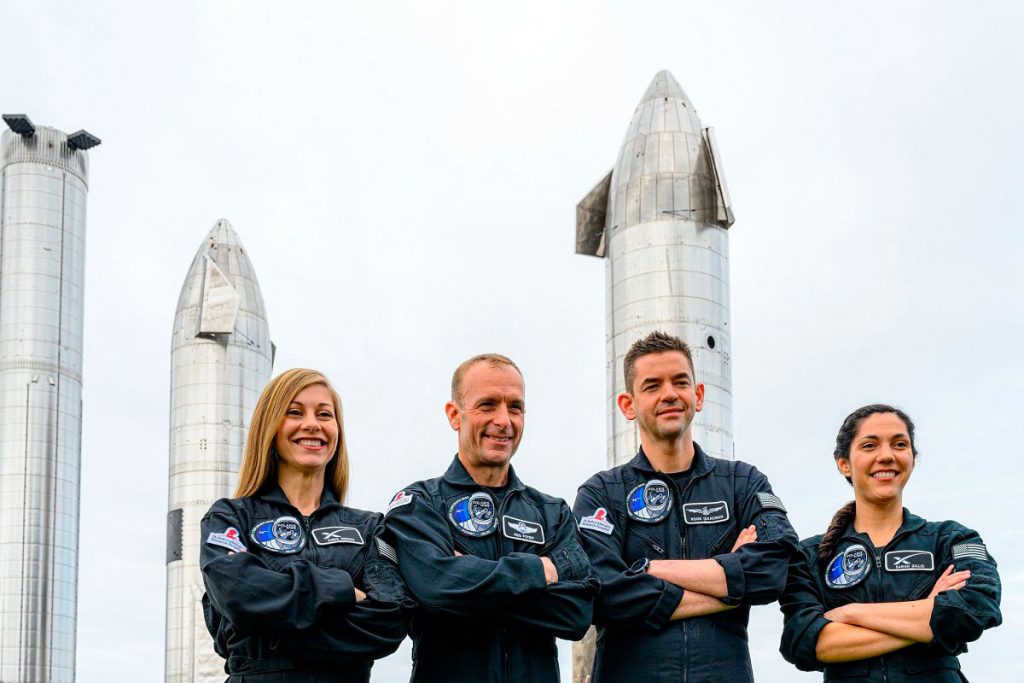
The Polaris Dawn initiative aims to carry out a minimum of three privately-funded manned space missions.
Next up: Japan has plans to launch an X-ray space telescope and a small lunar landing module into orbit in late March, utilizing its own H-IIA launch vehicle.
This mission, known as the X-ray Imaging and Spectroscopy Mission (XRISM), will focus on studying active galactic nuclei and the flow of matter in massive stars and galaxy clusters. Scientists anticipate that the telescope will provide valuable insights into the composition and formation of the universe.
Together with XRISM, Japan is planning to launch the “smart” lunar landing module, Smart Lander for Investigating Moon (SLIM), into space. Its main objective is to test the “technology of precise gentle landing”.
While descending to the Moon, the landing module will utilize facial recognition system technology to identify lunar craters and determine its precise location using observation data gathered by the Kaguya lunar lander from 2007 to 2009. According to the official website of JAXA, SLIM is expected to achieve a soft landing with a 100-meter accuracy at the designated location.
April
The inaugural crewed launch of the Boeing Starliner spacecraft is set to take place in April.
Following a successful unmanned test in May 2022, Boeing is now preparing for its first manned mission. Astronauts Sanita Williams and Barry Wilmore will be on board the spacecraft as it journeys to the International Space Station (ISS). After spending eight days on the ISS, the Starliner will make its way back to Earth. Once these initial crewed tests are deemed successful, Boeing will be able to utilize its spacecraft on a regular basis for crew delivery missions to the ISS.
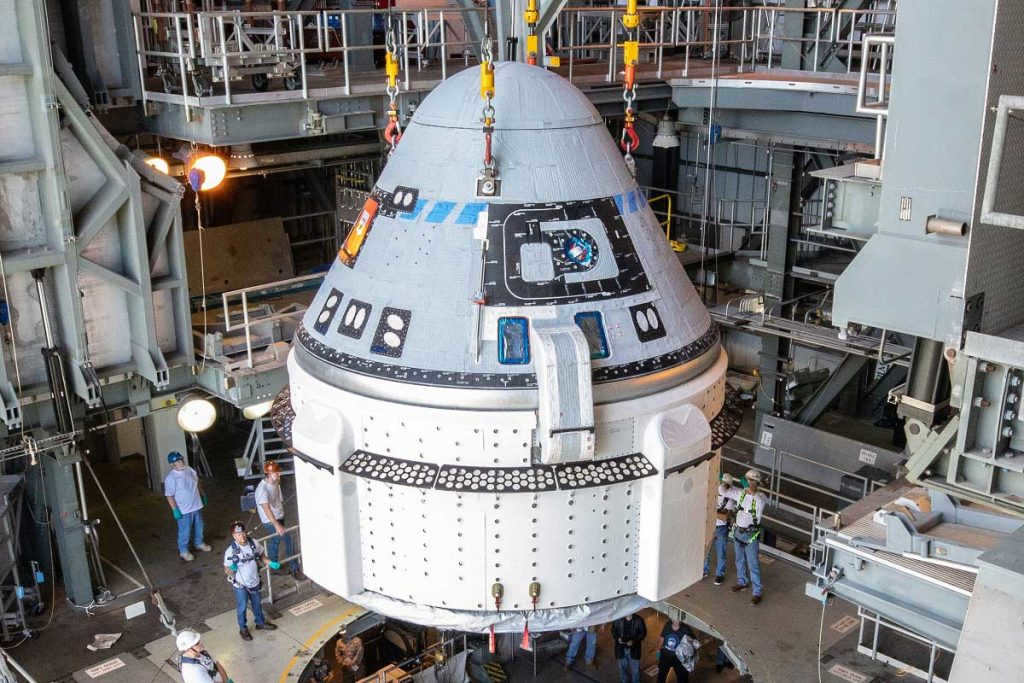
The CST-100 Starliner is set to be launched using an Atlas V launch vehicle.
On April 5, the European space mission Jupiter Icy Moons Explorer (JUICE) is planned to be launched.
Scientists are planning to send the JUICE orbital probe to Jupiter, where it will conduct research on the planet as well as its icy moons – Europa, Ganymede, and Callisto. There is a belief among astronomers that these moons may have hidden oceans of liquid water beneath their icy crusts. The spacecraft will investigate these celestial bodies and assess their potential for supporting life.
At the end of April, the Japanese private module M1, carrying a lunar rover developed by specialists from the UAE, is expected to make a touchdown on the lunar surface.
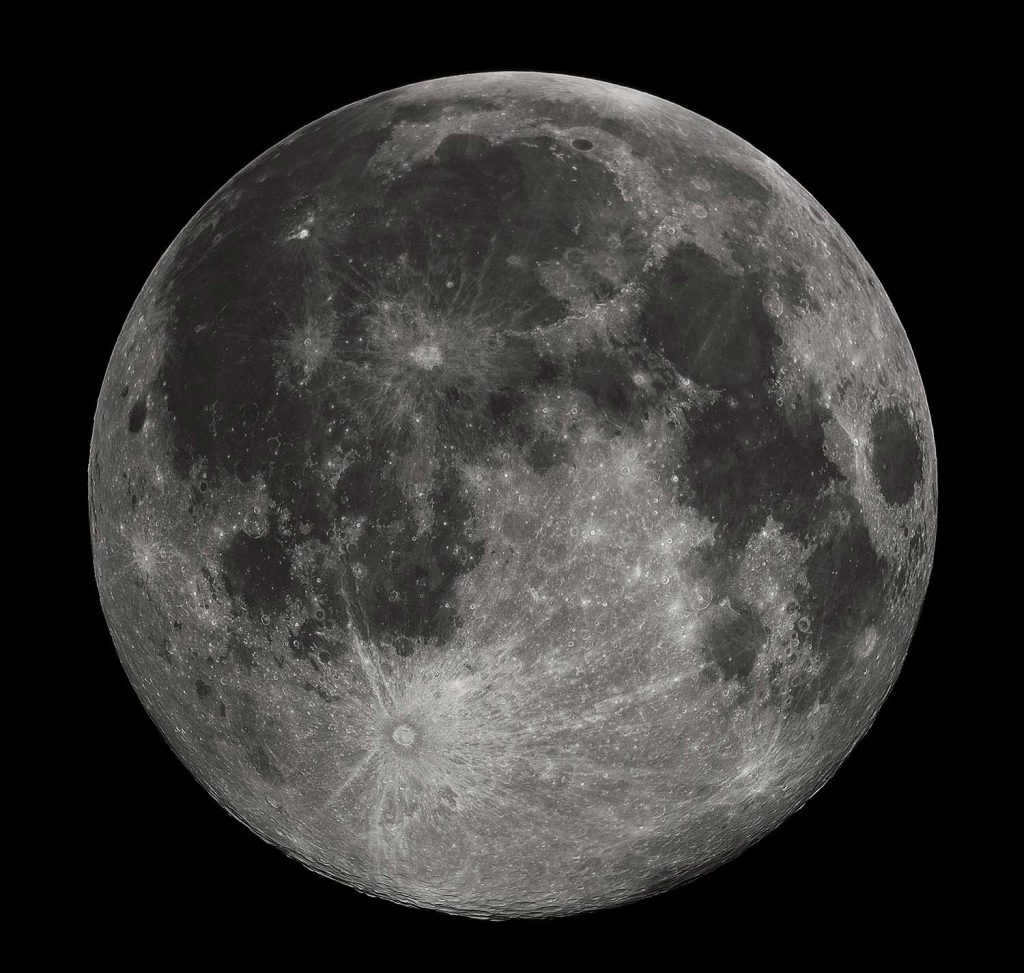
On December 11, 2022, the Japanese module was dispatched to the lunar surface. It is currently en route using a “slow and cost-effective” trajectory, and it is anticipated to land in four months.
The ispace company was responsible for the development of this spacecraft. If the mission is successful, it will mark the first time a private company has delivered its own lunar landing module.
May
Rocket Lab, a private space company, is scheduled to launch the inaugural private mission to Venus in the middle to end of May. The objective is to dispatch a compact probe that will investigate the upper regions of the Venusian atmosphere. Assuming everything goes as planned, the spacecraft will arrive at Venus in October 2023. The probe will descend into the Venusian atmosphere and analyze its makeup at altitudes ranging from 60 to 45 kilometers. Touchdown on the surface is not part of the mission’s scope.
June
No significant space missions are scheduled for launch this month.
July
In July, there are two potentially important space events that could occur.
The first event: the European Space Agency is planning to launch the Euclid orbital observatory during the third quarter. The telescope will be launched into a transitional orbit to the Lagrangian point L2 of the Sun-Earth system using a Falcon 9 launch vehicle. Originally, the Soyuz rocket from Kourou was intended to be used for the launch, but due to the events in Ukraine, cooperation between ESA and Roscosmos was terminated. As a result, the Europeans chose to work with SpaceX instead.
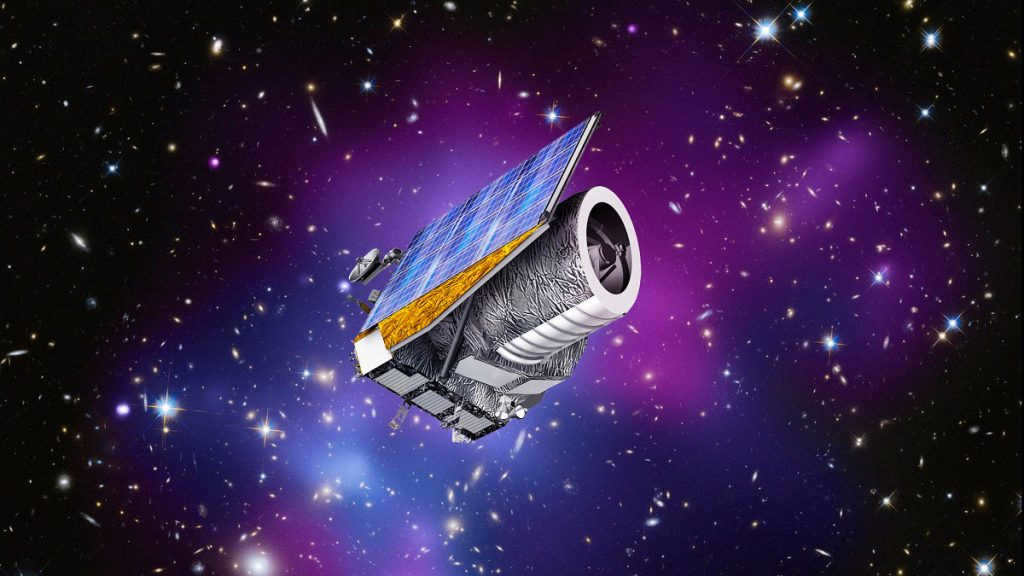
The Euclid telescope is set to gather data that will aid scientists in gaining a better understanding of the geometrical behavior of dark matter and dark energy. To achieve this, the device will conduct precise measurements of the universe’s expansion acceleration. The European Space Observatory will measure the redshifts of galaxies at various distances from Earth and explore the correlation between redshift and distance.
In another exciting development, Russia has planned to launch an automated interplanetary station named Luna-25 to the Moon during the months of July and August. This station will consist of a landing vehicle, which Russian scientists will use to test the technology of soft landing in the circumpolar region of the Moon. Additionally, the apparatus will conduct a study on the properties of lunar regolith at the South Pole of the satellite.
August
In August, India is planning to launch its Chandrayaan-3 mission to the Moon. This mission includes an orbital station, a landing module, and a lunar rover, all designed to study our satellite.
In addition, NASA’s IM-2 mission is set to send a small Lunar Trailblazer vehicle to the Moon. The main objective of this vehicle is to search for water on the lunar surface and create a detailed map. Scientists hope to determine the quantity of water present on the Moon and understand its correlation with the geological features of the satellite.
Accompanying the Lunar Trailblazer, the Prime-1 spacecraft, equipped with a drill, will also travel to the Moon. This robotic system aims to collect ice samples from beneath the lunar surface and conduct further exploration.
Both the Lunar Trailblazer and Prime-1 will be launched into orbit using the Falcon 9 carrier rocket.
September
On September 24th, assuming everything goes as planned, the OSIRIS-REx probe module will touch down on American soil. Its mission is to bring back soil samples collected from the asteroid Bennu.
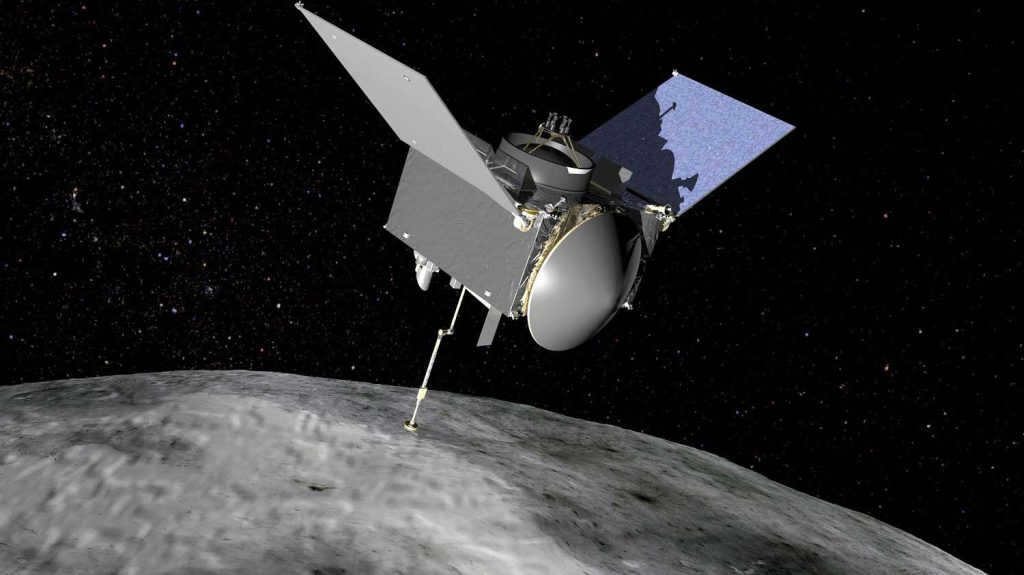
After the capsule OSIRIS-REx is dropped, scientists will examine and compare the samples with those collected by the Japanese probe Hayabusa-2 from the asteroid Ryugu. Following this, OSIRIS-REx will embark on an extended mission to explore the asteroid Apophis. Apophis is set to pass by Earth in 2029 at a distance of approximately 30,000 kilometers.
The OSIRIS-REx spacecraft was launched in 2016 and reached the asteroid Bennu two years later. It then collected soil samples from the asteroid’s surface after another two years.
India is planning to conduct the inaugural unmanned trial of its Gaganyaan spacecraft in October.
Since 2006, India has been working on its own manned spacecraft with the goal of becoming the fourth country in history to send its astronauts into space using a domestically produced spacecraft (following in the footsteps of the USSR/Russia, USA, and China).
The specific date for the first manned launch of Gaganyaan is still unknown and will depend on the outcomes of two unmanned trials scheduled for October 2023 and early 2024.
On October 10th, NASA is planning to launch the Psyche spacecraft to the asteroid of the same name. The device will be delivered into space using the Falcon Heavy rocket-carrier. Located in the asteroid belt between the orbits of Mars and Jupiter, the object 16 Psyche is primarily composed of iron and nickel, potentially representing the remains of a deceased protoplanet’s core.
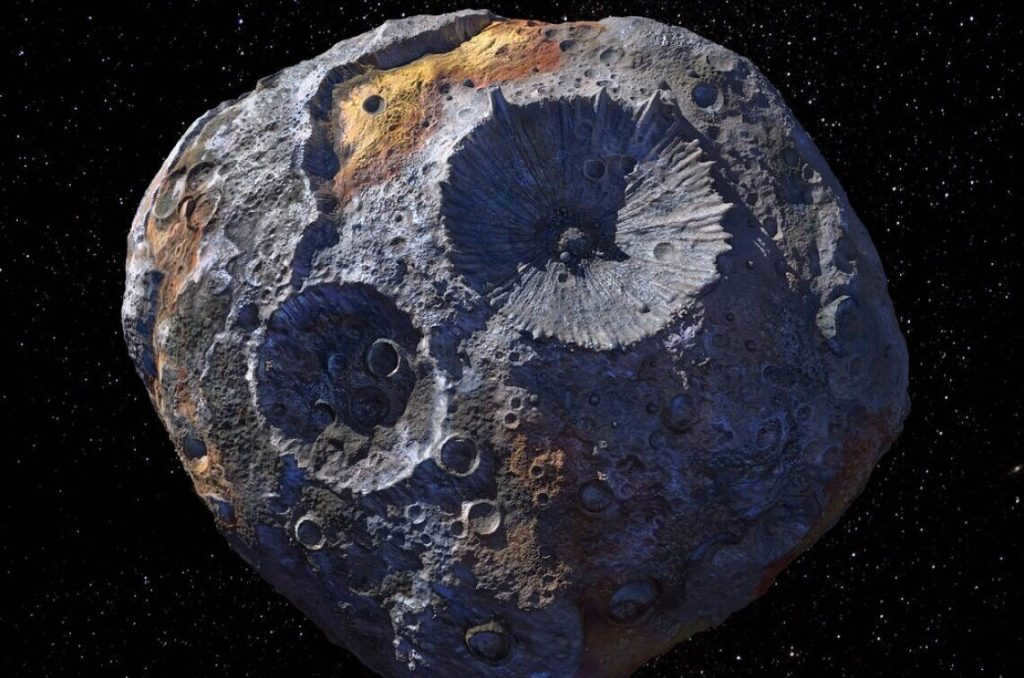

In 2029, the NASA spacecraft will reach the asteroid and conduct a close-up examination. The primary objective of the mission is to determine the origin of 16 Psyche.
November
As part of NASA’s Commercial Lunar Payload Services program, scientists are considering sending the Xelene lunar lander module, developed by Masten Space Systems, to our moon in November.
The module will touch down near the Haworth crater on the lunar surface. Xelene will search for ice and volatile substances like methane, carbon dioxide, and ammonia, both on the surface and at various depths. The module is expected to operate on the moon for a minimum of 12 days.
December
In December, China is planning to launch the Xuntian telescope into space, which will orbit the Earth in the same path as China’s Tiangong space station. This spacecraft will have the capability to dock with the station for necessary repairs, maintenance, and upgrades.
The Xuntian telescope will conduct exploration of the universe using optical and ultraviolet bands. It has a main mirror diameter of 2 meters and a resolution comparable to that of the Hubble Space Telescope. While the Chinese telescope’s mirror is smaller in diameter than the Hubble’s, it has a field of view that is 300 times larger. This means that over the course of its ten-year orbit, the Xuntian’s 2.5-gigapixel camera will be able to capture up to 40% of the sky.
On December 30th, the Juno spacecraft will meet up with Jupiter’s moon, Io. The probe will get close to Io and pass by at a distance of 1610 km, allowing it to gather a wealth of information about this celestial body.
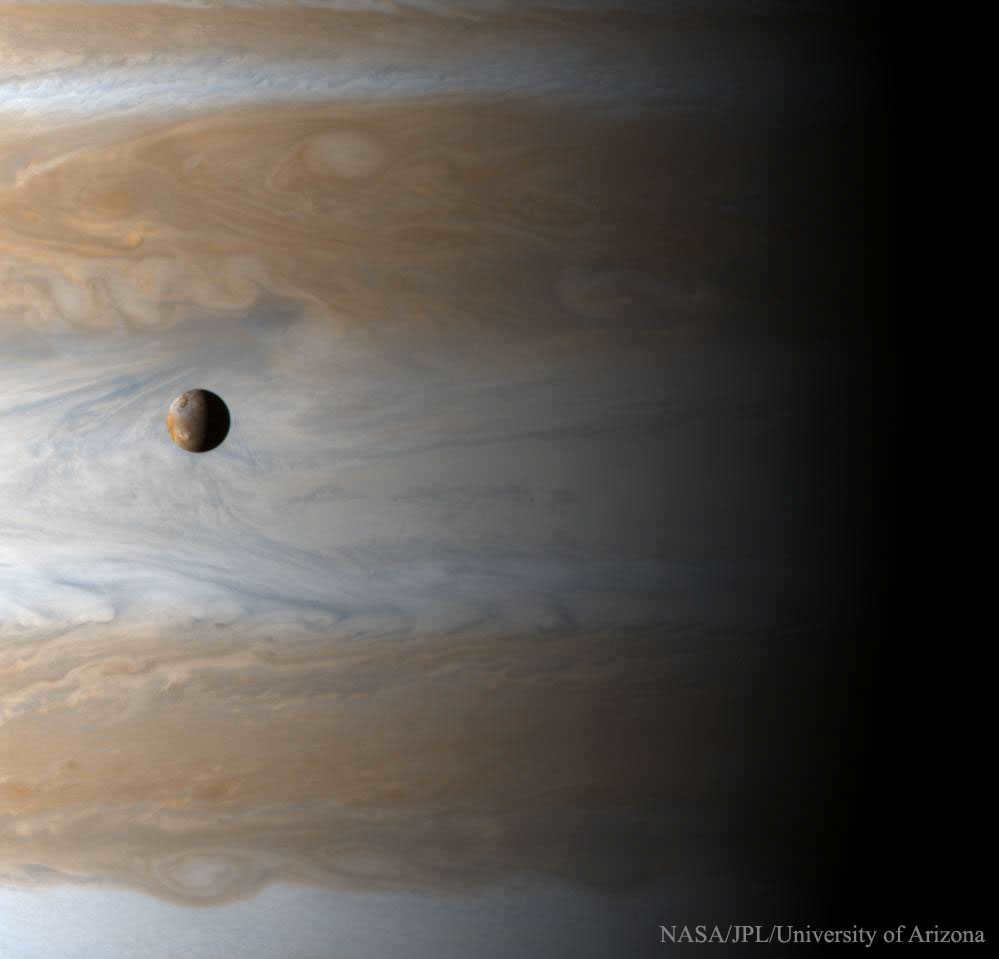

Io is a world with almost four hundred volcanoes that erupt and change its surface. Scientists last observed Io up close almost 30 years ago when the Galileo spacecraft visited it.
Check out our YouTube channel, get the latest updates on Telegram. Stay updated with all the new and interesting discoveries in the world of science on our Google News
Spotted an error? Simply select the text and press Ctrl+Enter.
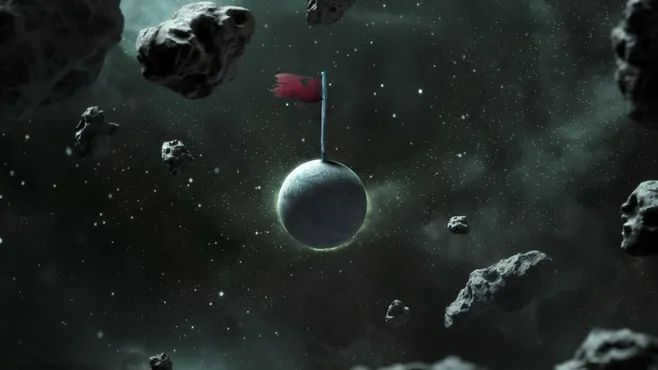
Following the announcement of the Russian unmanned lunar station launch, there was a surge of excitement among the Americans. International media outlets were filled with headlines such as “Never lose hope” and “Perhaps this attempt will be successful”. The NASA chief recently ruled out Russia as a competitor in the space race, stating that only China poses a significant challenge. Who should be acknowledged as the frontrunner and are there any hopeless stragglers?
Bill Nelson, the head of NASA, stated on Tuesday, August 8th, that he does not view Russia as a contender in the race for space exploration.
“I believe that few individuals would argue that Russia currently possesses the capability to send astronauts to the moon within the timeframe that we and China are discussing. Therefore, I believe that the space race is primarily between China and the United States,” stated the 80-year-old former astronaut.
However, Nelson did express his well wishes for the successful launch of the Luna-25 automated station, which represents Russia’s first mission to the moon in 47 years. Additionally, Nelson acknowledged the longstanding history of Russian and American collaboration in space, dating back to 1975, particularly in relation to the International Space Station program.
Astronauts Shannon Walker (NASA), Victor Glover (NASA), Mike Hopkins (NASA), and Soichi Noguchi (JAXA) were photographed before making their way to the launch pad at the George F. Kennedy Space Center. / RIA “Novosti”
International Media’s Response to the Luna-25 Launch
Following the successful launch of Luna-25, Western publications have started to criticize the mission as a mere “showy display.” The Guardian, a British newspaper, stated that.
“Even a simple Moon landing without any mishaps would already be considered a triumph,” stated the article’s authors.
The New York Times journalists were less negative in their reaction but still managed to cast doubt. They emphasized that the world will be closely monitoring the flight of the new lunar probe as Europe and America attempt to isolate Russia.
As per their perspective, Moscow is making efforts to enhance its political and economic connections with non-Western nations as a response to sanctions. One particular area of focus is the space program.
The launch of the Soyuz-2.1b launch vehicle with the Fregat upper stage and the Luna-25 automatic station from the Vostochny Cosmodrome / RIA Novosti
Politico expressed the most positive outlook. Its writers reminded that “the successful landing and productive research will signify a significant advancement in the realization of plans to establish a lunar base by the 2030s in collaboration with China”.
“If they accomplish this, it will be an immense technological and scientific accomplishment,” the journalists quoted Tim Marshall, the author of The Future of Geography, a book about the geopolitics of space.
Is the United States Leading the Global Space Race?
The United States is often seen as the dominant player in space exploration, but there are actually many countries making significant strides in this field.
It would be inaccurate to say that one country has taken a massive lead while the others lag hopelessly behind, according to Nathan Eismont, a prominent researcher at the Space Research Institute of the Russian Academy of Sciences and the Research Laboratory of Space Research, Technologies, Systems and Processes.
While the United States, China, and Russia are often considered the top contenders in this race, it seems that Russia’s presence in the competition is not to be underestimated, which perhaps worries the Americans.
“China is at the forefront in certain areas. While they were not the first to study the Moon, the Chinese successfully completed all of their objectives. For instance, they were able to return soil samples from the satellite back to Earth,” the scientist emphasized.
“The Jiuquan Cosmodrome in China is a busy hub before the launch of the Shenzhou-16 manned spacecraft,” mentioned the scientist.
“Currently, China is the sole country to have explored the far side of the Moon, which is a complex endeavor,” clarified Eismont.
The soil samples from China were not obtained from the rear side of the satellite, but rather from its visible portion. Subsequently, Chinese experts shared this material with their international counterparts, as is customary in the scientific community.
However, there is a catch
The United States seems to struggle with acknowledging and celebrating the achievements of others. They simply cannot come to terms with the notion that other nations can be ahead of them.
Therefore, in an attempt to instill fear in the entire Western community, international media outlets started disseminating reports suggesting that China and Russia had plans to conduct lunar exploration with the intention of developing nuclear weapons. The justifications put forth to support this claim were rather peculiar: Chinese and Russian scientists could supposedly harness the lunar minerals to manufacture “lethal weaponry.” The true intentions behind such news articles remain a mystery.
Other contenders vying for lunar development
There has been a recent surge in interest in space exploration, particularly of our planet’s moon, with multiple countries now joining the race. It seems as though the entire world has conspired to make it to the moon. Countries with advanced technology and space capabilities are determined not to be left behind by the pioneers of orbital conquest.
The leading researcher at IKI highlighted Japan’s previous unsuccessful attempts to land on the moon. However, the Indians have shown great perseverance in this endeavor. Despite a recent setback, they are gearing up for another attempt with their upcoming mission, “Chandrayaan-3,” which aims to successfully land on our planet’s satellite in the near future.
As per NASA, trailing, but actually leading
Thanks to the Luna-25 mission, Russia might become the pioneer in reaching the southern polar region of the Moon, emphasized Eismont. The chances of discovering water there are higher.
"It is believed that water reached the Moon through comets, which are predominantly made up of ice. Until now, water hasn’t been “detected” on the satellite. Now, Russia is demonstrating precisely this endeavor to “detect” water on the satellite – this is the realization of the Luna-25 mission. This is the ultimate accomplishment we are anticipating," he pointed out.
The number of contenders in the space race is increasing, added the scientist. Many competitors are on an equal footing in terms of specific technologies, equipment, and even the tasks themselves.





